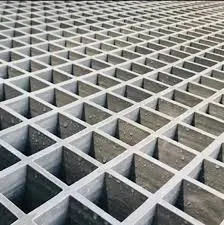
-
 Afrikaans
Afrikaans -
 Albanian
Albanian -
 Amharic
Amharic -
 Arabic
Arabic -
 Armenian
Armenian -
 Azerbaijani
Azerbaijani -
 Basque
Basque -
 Belarusian
Belarusian -
 Bengali
Bengali -
 Bosnian
Bosnian -
 Bulgarian
Bulgarian -
 Catalan
Catalan -
 Cebuano
Cebuano -
 China
China -
 China (Taiwan)
China (Taiwan) -
 Corsican
Corsican -
 Croatian
Croatian -
 Czech
Czech -
 Danish
Danish -
 Dutch
Dutch -
 English
English -
 Esperanto
Esperanto -
 Estonian
Estonian -
 Finnish
Finnish -
 French
French -
 Frisian
Frisian -
 Galician
Galician -
 Georgian
Georgian -
 German
German -
 Greek
Greek -
 Gujarati
Gujarati -
 Haitian Creole
Haitian Creole -
 hausa
hausa -
 hawaiian
hawaiian -
 Hebrew
Hebrew -
 Hindi
Hindi -
 Miao
Miao -
 Hungarian
Hungarian -
 Icelandic
Icelandic -
 igbo
igbo -
 Indonesian
Indonesian -
 irish
irish -
 Italian
Italian -
 Japanese
Japanese -
 Javanese
Javanese -
 Kannada
Kannada -
 kazakh
kazakh -
 Khmer
Khmer -
 Rwandese
Rwandese -
 Korean
Korean -
 Kurdish
Kurdish -
 Kyrgyz
Kyrgyz -
 Lao
Lao -
 Latin
Latin -
 Latvian
Latvian -
 Lithuanian
Lithuanian -
 Luxembourgish
Luxembourgish -
 Macedonian
Macedonian -
 Malgashi
Malgashi -
 Malay
Malay -
 Malayalam
Malayalam -
 Maltese
Maltese -
 Maori
Maori -
 Marathi
Marathi -
 Mongolian
Mongolian -
 Myanmar
Myanmar -
 Nepali
Nepali -
 Norwegian
Norwegian -
 Norwegian
Norwegian -
 Occitan
Occitan -
 Pashto
Pashto -
 Persian
Persian -
 Polish
Polish -
 Portuguese
Portuguese -
 Punjabi
Punjabi -
 Romanian
Romanian -
 Russian
Russian -
 Samoan
Samoan -
 Scottish Gaelic
Scottish Gaelic -
 Serbian
Serbian -
 Sesotho
Sesotho -
 Shona
Shona -
 Sindhi
Sindhi -
 Sinhala
Sinhala -
 Slovak
Slovak -
 Slovenian
Slovenian -
 Somali
Somali -
 Spanish
Spanish -
 Sundanese
Sundanese -
 Swahili
Swahili -
 Swedish
Swedish -
 Tagalog
Tagalog -
 Tajik
Tajik -
 Tamil
Tamil -
 Tatar
Tatar -
 Telugu
Telugu -
 Thai
Thai -
 Turkish
Turkish -
 Turkmen
Turkmen -
 Ukrainian
Ukrainian -
 Urdu
Urdu -
 Uighur
Uighur -
 Uzbek
Uzbek -
 Vietnamese
Vietnamese -
 Welsh
Welsh -
 Bantu
Bantu -
 Yiddish
Yiddish -
 Yoruba
Yoruba -
 Zulu
Zulu
grp chimney
The Significance of GRP Chimneys in Modern Architecture
In the rapidly evolving world of construction and architecture, the materials we choose can significantly impact not only the structural integrity of buildings but also their aesthetic appeal and environmental footprint. One material that has garnered attention in recent years is Glass Reinforced Plastic (GRP), particularly in the context of chimneys. GRP chimneys offer an array of benefits that make them an attractive choice for modern architectural practices.
Understanding GRP
Glass Reinforced Plastic, commonly known as fiberglass, is a composite material made of plastic reinforced with glass fibers. This innovative material provides a unique combination of strength, durability, and lightweight properties. Due to these characteristics, GRP has found its way into various applications, including construction, automotive, and aerospace sectors. However, its application in chimney construction has risen to prominence due to its numerous advantages.
Advantages of GRP Chimneys
The Significance of GRP Chimneys in Modern Architecture
2. Lightweight Compared to traditional chimney materials, GRP is significantly lighter, making it easier and more cost-effective to transport and install. This lightweight nature reduces the need for extensive structural support within buildings, contributing to overall design flexibility. Architects can create more innovative designs without the burden of heavy materials.
grp chimney

3. Thermal Insulation GRP chimneys possess excellent thermal insulation properties. This is crucial in reducing heat loss and maintaining the efficiency of heating systems within buildings. By minimizing heat transfer, GRP chimneys contribute to a more energy-efficient building, helping reduce overall energy consumption and costs.
4. Low Maintenance The durability of GRP chimneys translates to lower maintenance requirements. Unlike traditional chimneys that may require frequent repairs and upkeep, GRP structures can often be installed with minimal intervention needed over their lifespan. This factor plays an essential role in reducing the long-term costs associated with building maintenance.
5. Aesthetic Versatility GRP chimneys provide architects with design versatility. Available in various colors and finishes, they can be tailored to match the overall aesthetic of any building. Whether it’s a modern skyscraper or a classic residential home, GRP chimneys can seamlessly blend with the surrounding architecture, enhancing the overall visual appeal.
6. Environmental Considerations As society increasingly prioritizes sustainability, the environmental benefits of GRP cannot be overlooked. The production and lifecycle of GRP chimneys often result in lower carbon footprints compared to traditional materials. Furthermore, their durability and low maintenance needs mean that they do not contribute to waste as frequently as their conventional counterparts.
Conclusion
In conclusion, GRP chimneys represent a significant advancement in construction materials that can help meet the demands of modern architecture. With their corrosion resistance, lightweight nature, thermal insulation properties, low maintenance needs, aesthetic versatility, and environmental benefits, they provide a compelling choice for builders and architects alike. As the construction industry continues to innovate, the adoption of GRP chimneys may pave the way for more sustainable and aesthetically pleasing structures, ultimately contributing to a brighter future for our built environment. Embracing this technology not only reflects a commitment to quality but also to environmental responsibility, a crucial consideration in today’s world.









